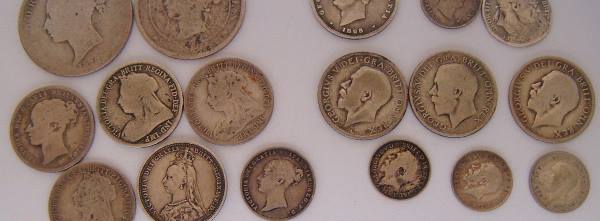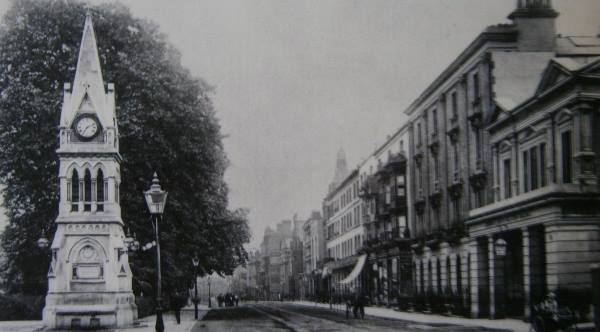Collecting animation drawings has exploded. Nostalgic baby boomers are snapping up their favorite cartoon characters, especially villains. Over six years ago a New York restaurateur got $450,000 for a 1934 black-and-white Disney animation cel – a transparent sheet of celluloid on which an animation drawing is inked and painted. Japanese animation, known as anime, is now a $60-million-a-year business. Art from Warner Bros., Hanna-Barbera, Walter Lantz (Woody Woodpecker), and others are also in demand. Why?
“Think of childhood cartoons, characters like Snow White, Tinker Bell, and The Lion King,” explains Judy Haddy, a Los Angeles artist’s representative. “When we look at these characters, it brings back part of our childhood that was a happier time for most of us because we did not have responsibilities.”
Ironically, these items were originally treated as trash. Warner Bros. burned its production cels in 1963 to make room for a costume department. According to Haddy, hardly any animators kept them. But others in the studios did. The drawings “were pretty, and janitors, engineers, and secretaries took them home for their kids.” People began selling them at art corners in parks.
The hobby took off, as did prices. Now, says Haddy, finding originals involves “luck and a prayer.” And money. A genuine cel used in Sleeping Beauty can fetch $5,000. Ditto for a Bambi cel or a Mickey Mouse from The Sorcerer’s Apprentice. Snow White’s dwarfs command up to $6,000. During the 1950s each of these was available at souvenir stands in Disneyland for $1.25.
Studios now recognize the value of these items, and produce limited editions for collectors. Xerographic-line cels involve hand painting and usually are limited to 500 in a run. Serigraph cels are completely mechanically produced and come in editions of 2,500.
Art galleries are a major outlet. Some strive to become a studio’s “authorized dealer” or “preferred gallery.” Want alternative sources? Try auctions and brokers like Haddy. Think of anyone you know who works in a studio. They may have access to discards. Visit the three major animation festivals, which take place in Anncy, France; Ottawa, Canada; and Hiroshima, Japan. Aardman Animations, a British studio that produced Babylon, Creature Comforts, and The Wrong Trousers, is organizing a fourth festival to be held in Bristol. These venue’s could be rewarding for collectors wanting to gamble on finding the next Disney.
If you plan to focus on Japanese cels — which are soaring in popularity in the U.S. – the Los Angeles Times reports that at least in Japan, they are “still bought and sold through an underground network of collectors…”
It is the cels that have driven the hobby and spiked the prices. But other types of animation items exist. In the approximate order in which they are created, they include:
Roughs: the animator’s rather sketchy drawings.
• A pot pourri of concept drawings, preliminary drawings and pastels.
• Publication model sheets: After creating a character, animators prepare this drawing to assure continuity. It displays a character’s exact details from every conceivable angle. Artists consult the model sheet to determine how to draw, say, Minnie Mouse. Disney warns its artists not to show her underpants and reminds them that Minnie “carries small matching purse with beautiful matching floral design on side.” Dumbo always has “two wrinkles in lieu of eye brows” and a “pointed lower lip.” In 1997, according to Haddy, a Jiminy Cricket model sheet retailed for about $600; a Figaro sheet, about $265.
• Story sketches: a simple storytelling drawing done by a story person.
• Layouts: the black and white rendering that determines the basic composition of the scene.
• Clean up drawings and final drawings.
• Cels: These depict characters in a unique position. Each cel is photographed only once. This makes every original production cel one of a kind.
• Frames: The individual pictures of each cel become the frames that taken together create the image of movement (animation) and constitute the actual reel of film. Each frame represents one twenty-fourth of a second on the screen. According to Haddy, a frame from Snow White sold for over $10,000.
• Backgrounds: Opaque paintings that serve as the scenery behind the animation. Cels usually are overlaid on the background. Since there may be one background for hundreds of cels, original backgrounds are rarer than cels.
Haddy notes that drawings constitute a cartoon’s essence because the real animator created the drawing as well as the character. From the drawing came the cel, which was “done by the ‘ink and paint ladies’ – the studio flunkies. I purposely say that because it was sexist. The men were the animators, and the ladies were the ink and paint people.”
Spotting fakes presents one of the hobby’s biggest problems. In 1995, the Hwa Rim Animation School in Seoul, Korea, was caught funneling at least 100 Warner Bros. animation cels into the United States. Sometimes counterfeits can be identified by improper peg holes at the bottom. (Metal pegs allow drawings, cels, and other material to be kept in proper relation to each other, or registry, as they move through the studio.) If in doubt, take the item to an expert such as an animation auctioneer or a conservator in the field. Linda Witkowski, associate conservator at the Indianapolis Museum of Art, urges collectors to question their dealers, read books on animation, call museums for help, and know the terminology.
Most collectors are adults. Steven Spielberg and Whoopi Goldberg enjoy the hobby. Japanese cel collector and dealer Rick Alonzo, owner of Anime Wink, is forty-two. Echoing Haddy, he says that “The whole thing behind cel collecting is they can own a piece of that favorite film they grew up with, like buying a piece of their youth.”




